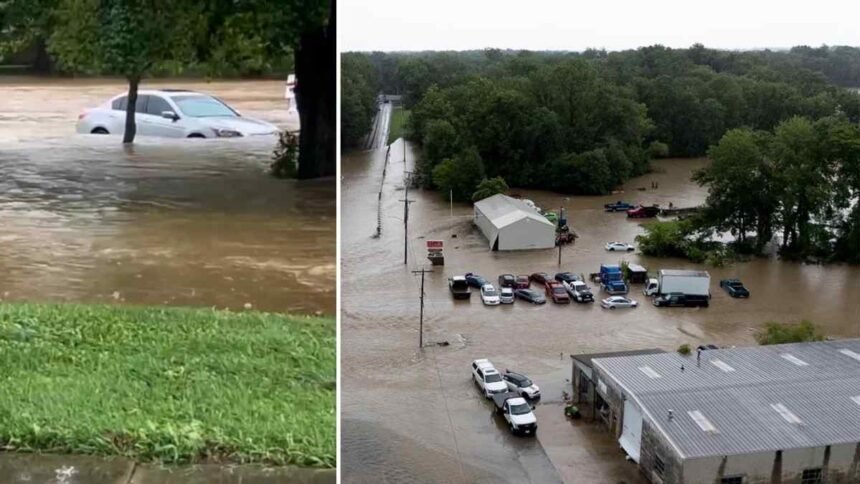The Nashville Dam break in 2024 marks a significant event in the city’s history, causing widespread devastation and prompting urgent discussions on infrastructure safety. The disaster led to massive flooding, displacing thousands and damaging properties. As Nashville rebuilds, lessons learned from this tragedy are shaping future preparedness and safety measures to prevent such incidents.
Introduction
The Nashville Dam Break of 2024 was a devastating event that left an indelible mark on the city and its residents. The disaster caused widespread flooding, significant property damage, and loss of life, highlighting the critical need for improved infrastructure and emergency preparedness. This article delves into the causes of the dam break, the immediate impact on the community, and the long-term consequences for Nashville and beyond.
The Build-Up to Disaster
Before the catastrophic failure, the Nashville Dam was already under scrutiny for its aging structure and insufficient maintenance. Experts had warned about potential vulnerabilities in the dam’s design, which were exacerbated by extreme weather conditions leading up to the event. Heavy rainfall in the weeks prior had raised water levels to critical heights, creating an unprecedented amount of pressure on the dam’s infrastructure.
The Day of the Break
On the morning of April 14, 2024, the unthinkable happened. The Nashville Dam, a critical piece of infrastructure for the city, succumbed to the immense pressure, resulting in a catastrophic failure. The break unleashed millions of gallons of water into the surrounding areas, flooding homes, businesses, and public spaces within minutes. Emergency services were quickly overwhelmed as they attempted to evacuate residents and provide aid to those affected.
Immediate Impact on the Community
The immediate aftermath of the Nashville Dam break was chaos. Thousands of residents were displaced, with many losing their homes entirely. The floodwaters caused extensive damage to infrastructure, including roads, bridges, and utility lines, complicating rescue efforts. In addition to the physical damage, the emotional toll on the community was immense. Families were torn apart, and the city faced a long road to recovery.
Environmental Consequences
The environmental impact of the dam break was profound. The sudden influx of water disrupted local ecosystems, displacing wildlife and contaminating water supplies. The floodwaters carried debris, pollutants, and hazardous materials into the Cumberland River, leading to long-term environmental challenges. The disaster also highlighted the broader issue of climate change and its role in exacerbating such events.
The Human Cost
Tragically, the Nashville Dam break resulted in the loss of lives. Emergency responders worked tirelessly to rescue those trapped by the floodwaters, but the speed and scale of the disaster made it impossible to save everyone. In the days following the break, the city mourned the loss of loved ones and began the painful process of rebuilding.
Response and Recovery Efforts
In the wake of the disaster, local, state, and federal agencies mobilized to provide aid and support to Nashville. The recovery efforts were monumental, involving thousands of volunteers, emergency responders, and government officials. Temporary shelters were established for displaced residents, and reconstruction efforts began almost immediately. However, the road to recovery was long and fraught with challenges.
Lessons Learned
The Nashville Dam break of 2024 served as a stark reminder of the importance of infrastructure maintenance and emergency preparedness. In the aftermath, there was a renewed focus on assessing and reinforcing aging dams across the country. The disaster also sparked a broader conversation about climate change and its impact on infrastructure resilience. Nashville’s experience became a case study for cities worldwide, emphasizing the need for proactive measures to prevent similar tragedies.
The Role of Technology in Future Prevention
One of the key takeaways from the Nashville Dam break was the role that technology can play in preventing such disasters. Advanced monitoring systems, predictive analytics, and real-time data collection are now being used to assess the condition of dams and other critical infrastructure. These technologies provide early warning signs of potential failures, allowing for timely interventions and reducing the risk of catastrophic events.
The Future of Nashville
As Nashville rebuilds, the city is not just focusing on recovery but also on future resilience. Investments are being made in modernizing infrastructure, improving emergency response systems, and fostering community preparedness. The lessons learned from the 2024 dam break are being applied to ensure that Nashville is better equipped to handle future challenges.
Conclusion
The Nashville Dam break of 2024 was a tragic event that brought immense hardship to the city and its residents. However, it also provided valuable lessons that are shaping the future of infrastructure safety and emergency preparedness. As Nashville continues to rebuild, the city is emerging stronger and more resilient, with a renewed commitment to protecting its citizens and environment.
For More Visit, Viraltimes.co.uk







